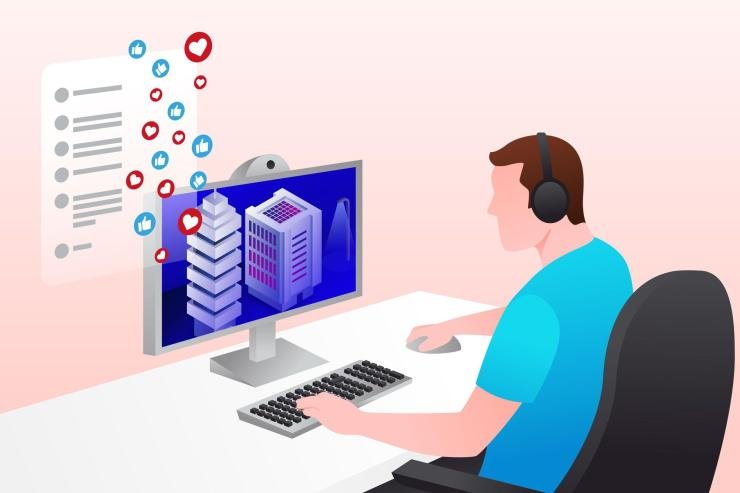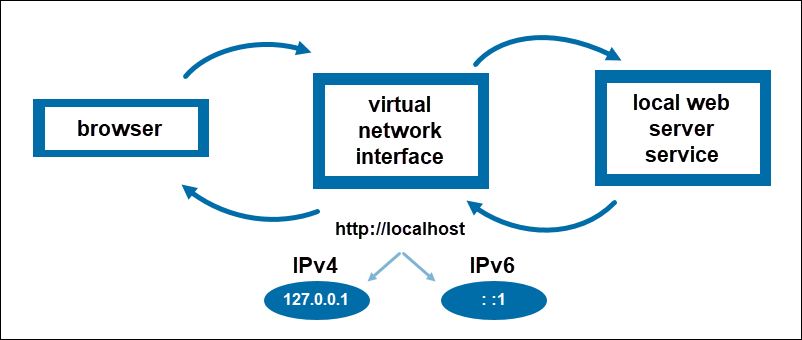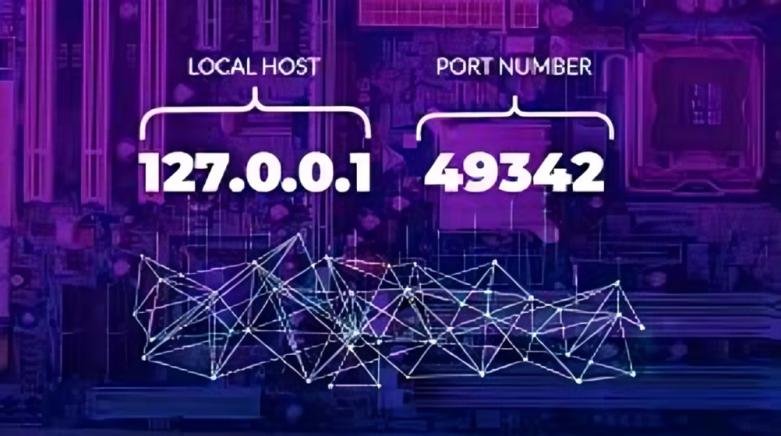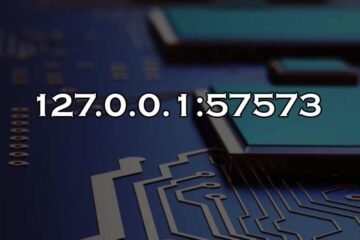If you’ve ever worked with computers, networks, or even just tried to set up a local server for development, you might have seen something like 127.0.0.1:49342. This combination of numbers might seem confusing, but it’s actually a very common thing in the world of networking and web development.
In this blog, we’ll break down exactly what 127.0.0.1 and 49342 mean, why they matter, and how they are used. By the end, you’ll understand this important piece of tech knowledge, whether you’re a beginner or already know a bit about networking.
1. What is an IP Address?

Let’s start with the basics. An IP address (Internet Protocol address) is a unique set of numbers that identify a device on a network. Think of it as the address of a house – it helps data find its way to the right place.
There are two types of IP addresses:
- Public IP Address: This is the address your device uses to communicate with other devices over the internet.
- Private IP Address: This is used inside your home or office network, allowing your devices to talk to each other without needing to access the internet.
Also read: Pedrovazpaulo Executive Coaching
2. What is 127.0.0.1? (Localhost)

127.0.0.1 is a special type of IP address called a loopback address, also known as localhost. This address doesn’t go out to the internet. Instead, it refers back to your own computer or device. It’s like calling yourself on the phone.
When you use 127.0.0.1, you’re asking your computer to talk to itself. This is very useful when testing web applications, software, or network services because you don’t need an external server. It’s all happening locally, on your own machine.
Also read: Prince Narula Digital PayPal: A Simple Guide to How Digital Payments Help Influencers
3. What is a Port Number?
Now that we’ve explained the IP part, let’s talk about the number after the colon (e.g., 49342). That number is called a port.
A port is like a door to your computer. Each door leads to a different service or program. For example:
- Port 80 is used for HTTP websites.
- Port 443 is used for HTTPS (secure websites).
- Port 25 is for email.
When you type 127.0.0.1:49342, you’re telling your computer, “Use the IP address 127.0.0.1 and connect to whatever is running on port 49342.”
4. What is 49342? (Ephemeral or Dynamic Port)
Port 49342 is an example of a dynamic or ephemeral port. These ports are randomly assigned by your computer when it needs to temporarily open a connection. For example:
- When you visit a website, your computer might open a random port like 49342 to handle the traffic between your browser and the web server.
Ports in the range of 49152–65535 are considered dynamic ports. They are usually not fixed like port 80 (for websites) or port 443 (for secure connections). Instead, they’re used for temporary, short-term connections.
Also read: Unblocked Games Google Classroom: How to Play Safely and Responsibly
5. How 127.0.0.1 and 49342 Work Together

When you combine 127.0.0.1 with a port like 49342, you’re telling your computer to:
- Use 127.0.0.1, which refers to the computer itself.
- Access whatever service or program is running on port 49342.
This is often used in web development. For example, if you’re creating a website and you’re testing it on your own computer, you might see something like 127.0.0.1:49342 in your web browser. This means your web server is running locally on your machine, using port 49342 to handle the web traffic.
6. Why 127.0.0.1:49342 is Useful
Here’s why this combination is important:
- For Developers: Developers often use 127.0.0.1 to test websites or applications locally, without needing a real server.
- For Network Engineers: Network engineers use localhost addresses to troubleshoot or test networking software.
- For Security: Since 127.0.0.1 only works on your local computer, it’s more secure for testing. No one from the outside world can access it.
7. Common Uses of 127.0.0.1:49342
Here are some common scenarios where you might see 127.0.0.1:49342 in action:
1. Local Web Development
When you’re building a website on your computer, you’ll often set up a local server. The server runs on 127.0.0.1 (your computer), and the port (like 49342) handles the web traffic.
2. Software Testing
If you’re testing an application or service, you might use 127.0.0.1 with a port like 49342 to simulate how it works on a real network without actually connecting to the internet.
3. Debugging and Troubleshooting
When a network problem happens, engineers use 127.0.0.1 to diagnose the issue by running tests directly on the machine, without external interference.
Also read: Ztec100.com: Your Guide to Technology, Health, and Insurance
8. How to Access 127.0.0.1:49342
If you’re working on a local project and need to access a service on 127.0.0.1:49342, here’s how to do it:
- Open Your Web Browser: Simply type http://127.0.0.1:49342 into the address bar. This will connect to whatever is running on your computer at that port.
- Command Line Access: You can use commands like curl http://127.0.0.1:49342 to fetch information from that port, or netstat to see which ports are in use.
9. Security and 127.0.0.1:49342
While 127.0.0.1 is secure because it’s only accessible from your local machine, there are a few things to keep in mind:
- Protect your services: Even though no one from the outside can access 127.0.0.1, someone on your computer can. Be mindful of what services are running on localhost.
- Close unused ports: If you’re done using a port like 49342, make sure it’s closed so it doesn’t accidentally stay open and cause issues.
10. Troubleshooting Issues with 127.0.0.1:49342
Here are some common issues you might encounter when working with localhost and ports, and how to fix them:
- Port Already in Use: Sometimes, a port like 49342 might already be in use by another program. You can use the command netstat -an to check which ports are currently open and close any that are not needed.
- Firewall Blocking Access: Occasionally, your firewall might block access to certain ports. Make sure to configure it properly to allow traffic on 127.0.0.1 for your specific ports.
11. Conclusion
At first, 127.0.0.1:49342 might seem like a complicated combination of numbers, but it’s actually a very common and useful tool, especially in web development and networking. By understanding what 127.0.0.1 (localhost) and 49342 (a dynamic port) mean, you can start to see how computers communicate internally and how developers test applications before making them public.



0 Comments